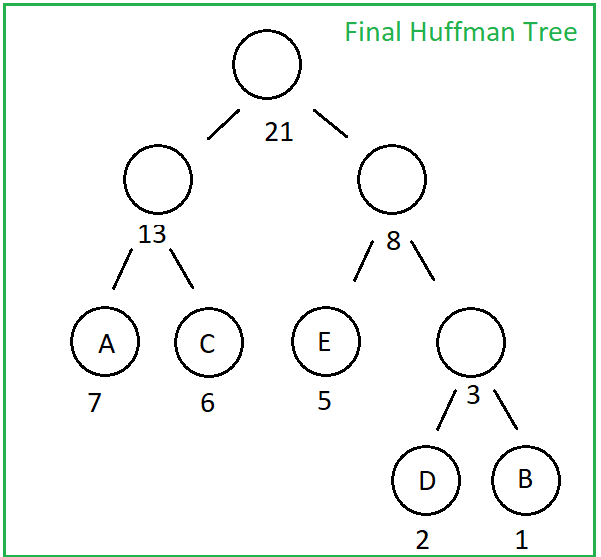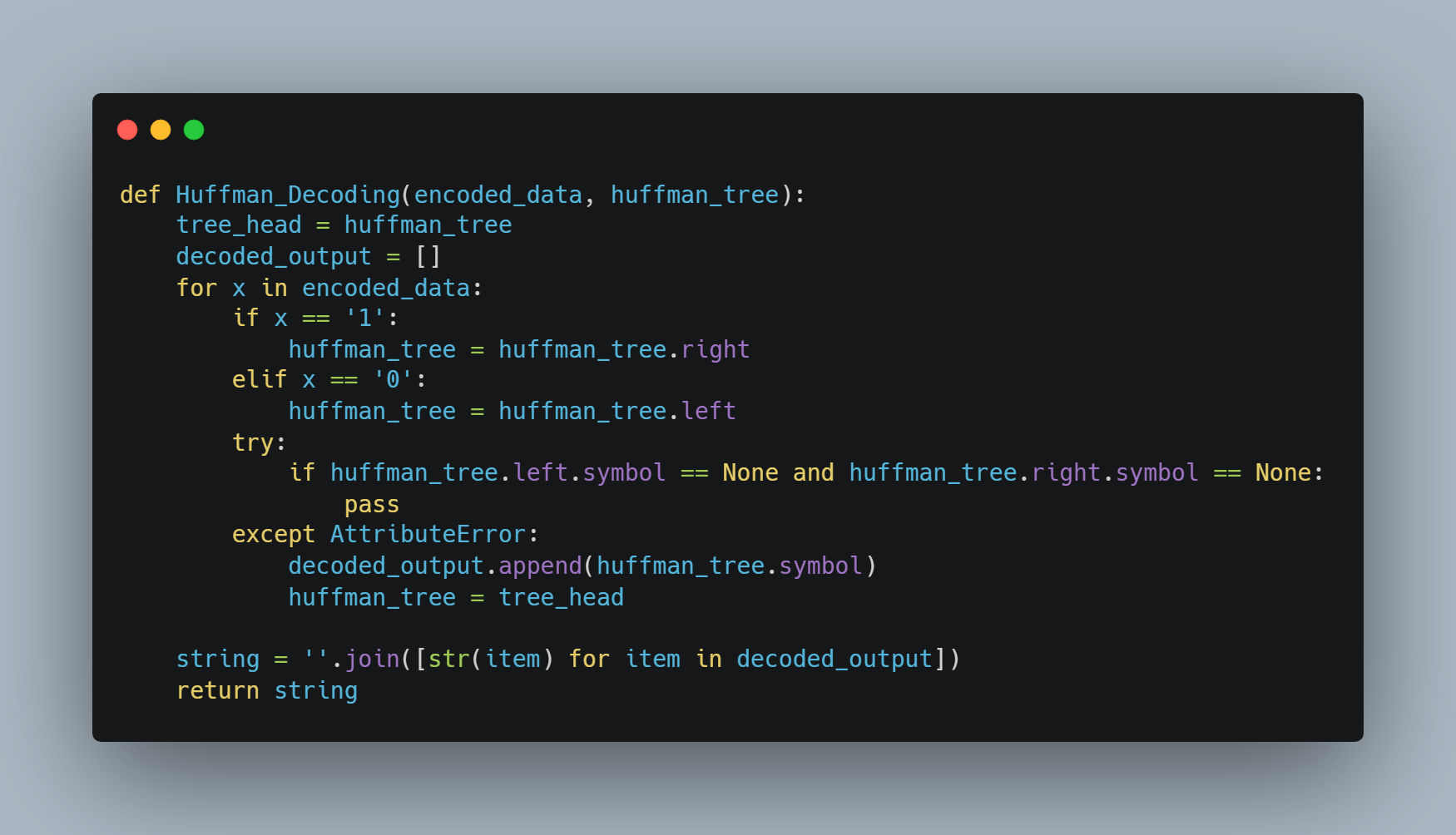Lossles Compression:
- Lossless compression is a class of data compression algorithms that allows the original data to be perfectly reconstructed from the compressed data. Lossless compression methods are reversible. Examples of lossless compression include GZIP, Brotli, WebP, and PNG.
- Lossles Compression is preffered for text file compression, while Lossy Compression is generally preferred
for audio, video and image files.
- File formats like ZIP use Lossless compression, while formats like MP3 and JPEG use
Lossy compression
- Data compression ratio , also known as compression power, is a measurement of the relative reduction
in size of data representation produced by a data compression algorithm. It is typically expressed as the
division of uncompressed size by compressed size. Thus, a representation that compresses a file's storage
size from 10 MB to 2 MB has a compression ratio of 10/2 = 5

Huffman Code:
-
A Huffman code is a particular type of optimal prefix code that is commonly used for lossless data
compression. The process of finding or using such a code proceeds by means of Huffman coding, an algorithm
developed by David A. Huffman.
-
The output from Huffman's algorithm can be viewed as a variable-length code table
for encoding a source symbol (such as a character in a file). The algorithm derives this table from the
estimated probability or frequency of occurrence (weight) for each possible value of the source symbol.
- Prefix Codes, means the codes (bit sequences) are assigned in such a way that the code assigned to
one character is not the prefix of code assigned to any other character. This is how Huffman Coding makes
sure that there is no ambiguity when decoding the generated bitstream.
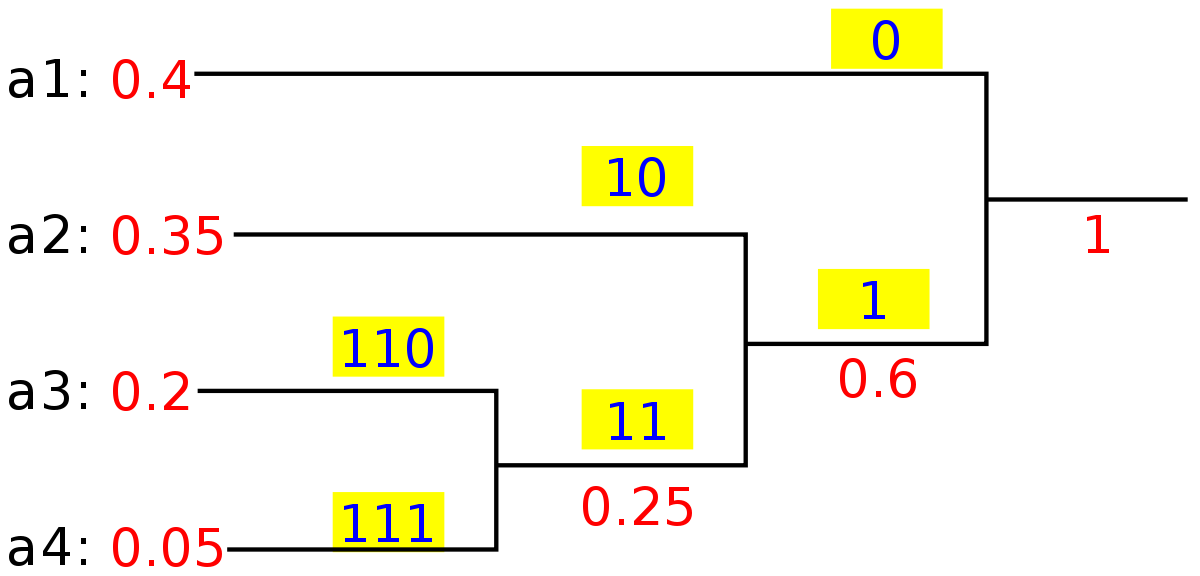
A Huffman coding tree built from this character frequency table: A=0.6, B=0.2, C=0.07, D=0.06, E=0.05, F=0.02.
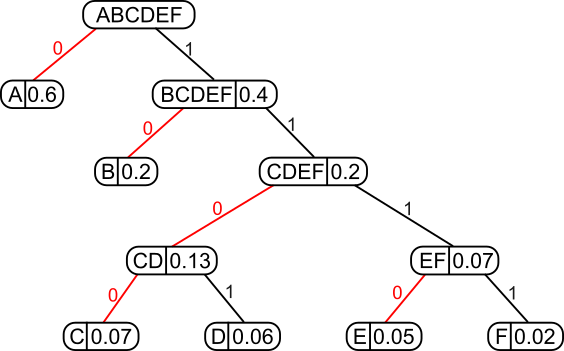
Compression:
- Probability Calculation & Ordering the Symbols
- Binary Tree Transformation
- Assigning Codes to the Symbols

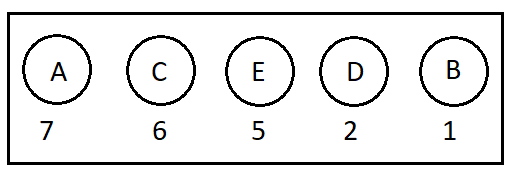
- 1. From the collection, we pick out the two nodes with the smallest sum of probabilities and combine them into a new tree whose root has the probability equal to that sum.
- 2. We add the new tree back into the collection.
- 3. We repeat this process until one tree encompassing all the input probabilities has been constructed.
- Having our Binary Huffman Tree obtained during encode phase, decoding is a very simple process to perform.
- Let’s consider we have the same example with Huffman Encoding post, therefore we have AAAAAAABCCCCCCDDEEEEE as our initial data and 000000000000001110101010101011101101010101010 as encoded output with the following Huffman Tree:
- Now the only thing we should do is starting from the head of Huffman Tree and from the beginning of the encoded data, each time we encounter 1 we go right and while we encounter 0, we go left through the Huffman Tree. When we reach at a leaf node, we obtain the symbol! Then we just start again from the head of Huffman Tree while moving forward on encoded data.
- With a few lines added in huffman.py coming from Huffman Encoding & Python Implementation, we can easily implement Huffman_Decoding and here is the result:
- Data compression is a topic of many applications and it has various different types of algorithms beside of “frequency based” Huffman Algorithm. You can check for “dictionary based” methods like LZ77 LZ78 LZW which are useful for image compression especially.
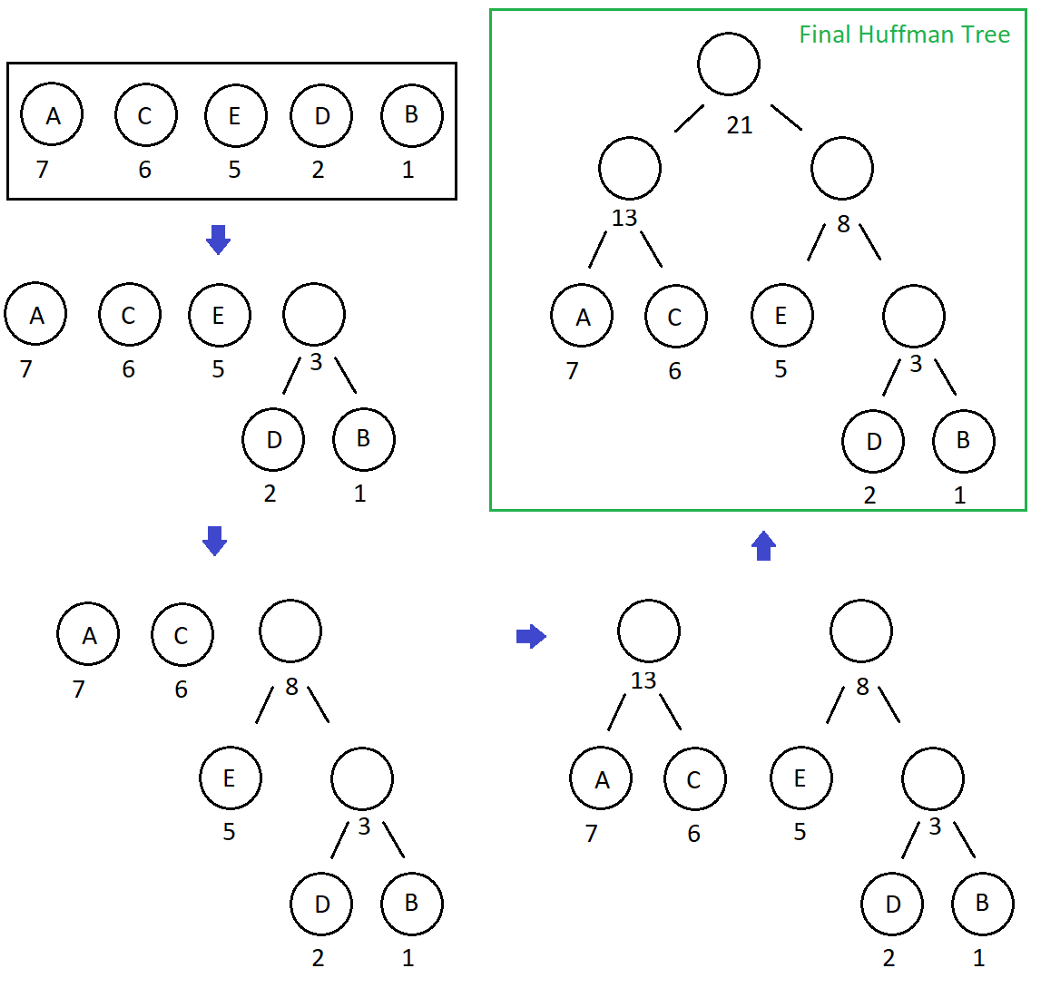
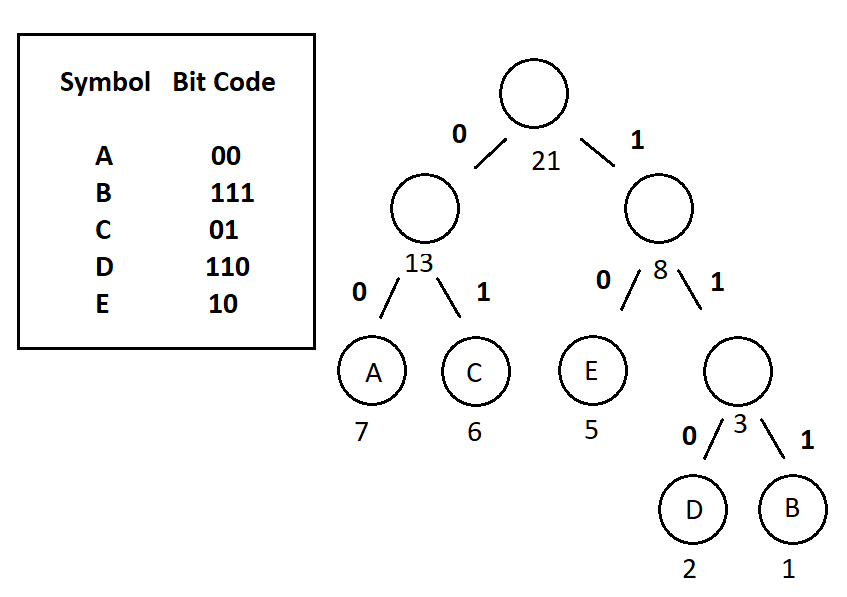
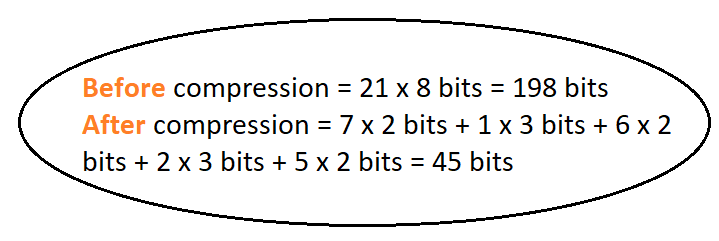


- As a conclusion, we see that the compression ratio does not change with the growing amount of data, and this ratio is close to 2:1. We can say that Huffman Encoding is an algorithm that compresses the data to its half size. Although it is old, it is still an effective compression algorithm!
De-compression:
